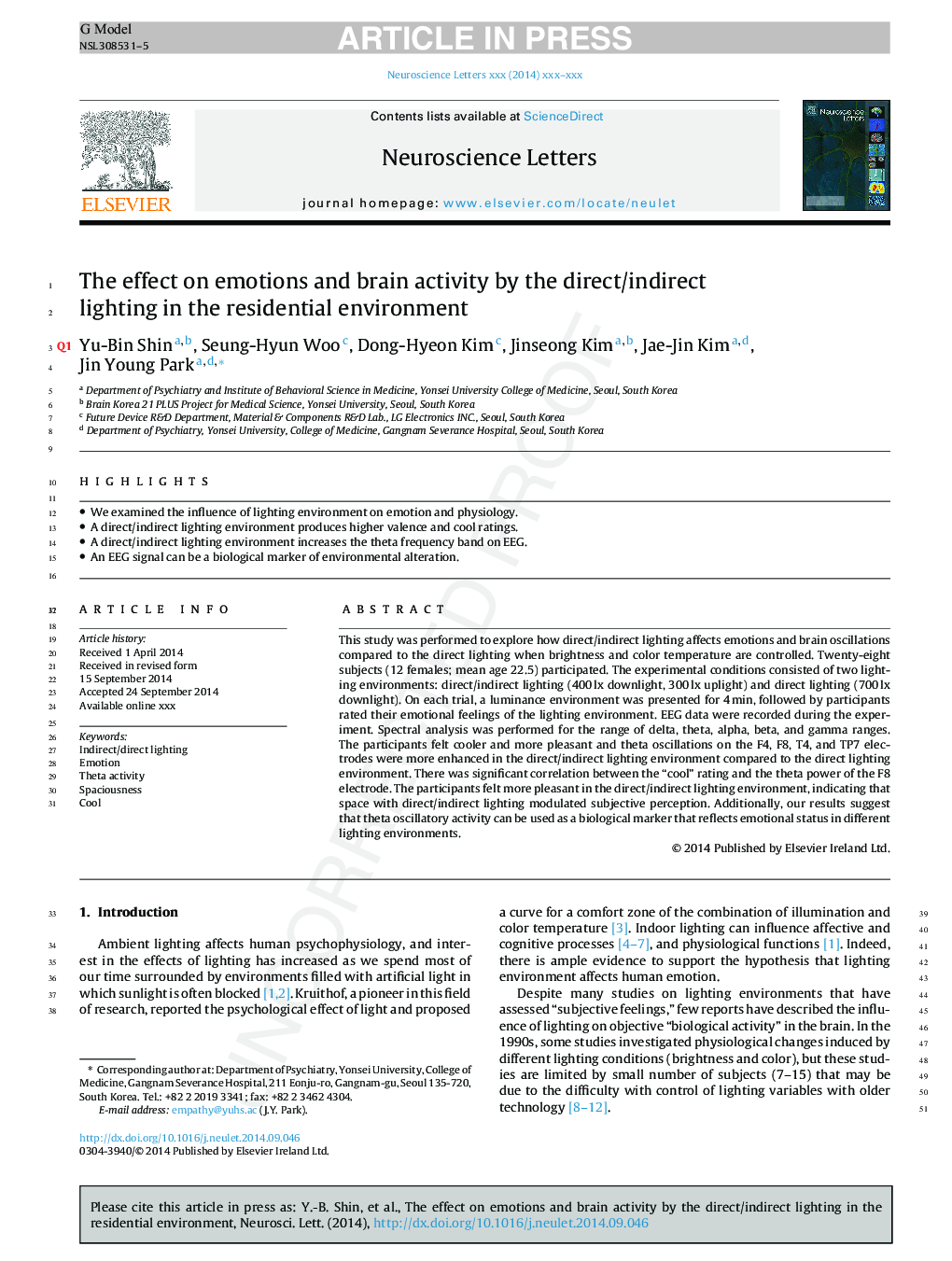| Article ID | Journal | Published Year | Pages | File Type |
|---|---|---|---|---|
| 6281367 | Neuroscience Letters | 2015 | 5 Pages |
Abstract
This study was performed to explore how direct/indirect lighting affects emotions and brain oscillations compared to the direct lighting when brightness and color temperature are controlled. Twenty-eight subjects (12 females; mean age 22.5) participated. The experimental conditions consisted of two lighting environments: direct/indirect lighting (400Â lx downlight, 300Â lx uplight) and direct lighting (700Â lx downlight). On each trial, a luminance environment was presented for 4Â min, followed by participants rated their emotional feelings of the lighting environment. EEG data were recorded during the experiment. Spectral analysis was performed for the range of delta, theta, alpha, beta, and gamma ranges. The participants felt cooler and more pleasant and theta oscillations on the F4, F8, T4, and TP7 electrodes were more enhanced in the direct/indirect lighting environment compared to the direct lighting environment. There was significant correlation between the “cool” rating and the theta power of the F8 electrode. The participants felt more pleasant in the direct/indirect lighting environment, indicating that space with direct/indirect lighting modulated subjective perception. Additionally, our results suggest that theta oscillatory activity can be used as a biological marker that reflects emotional status in different lighting environments.
Related Topics
Life Sciences
Neuroscience
Neuroscience (General)
Authors
Yu-Bin Shin, Seung-Hyun Woo, Dong-Hyeon Kim, Jinseong Kim, Jae-Jin Kim, Jin Young Park,
